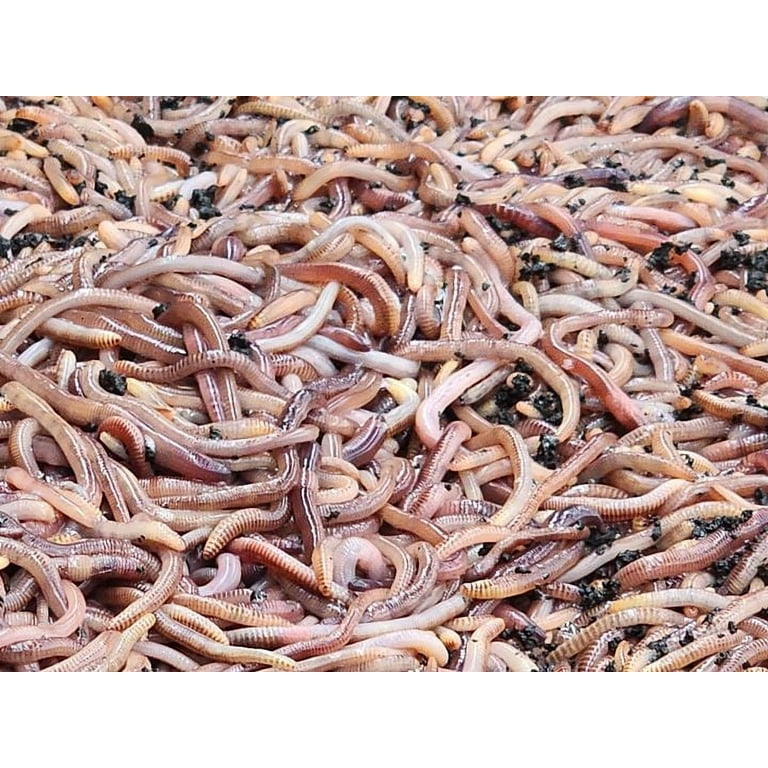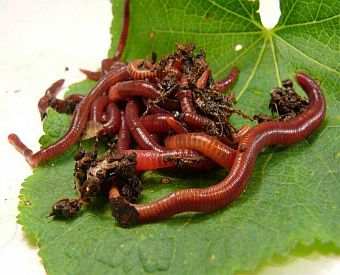The Duty of Red Wigglers in Sustainable Horticulture
The integration of red wigglers right into lasting gardening practices uses a compelling technique to boosting dirt health and reducing natural waste. The implications of utilizing red wigglers expand past simple composting; their function in forming a much more lasting future warrants a much deeper expedition of their advantages and useful applications.
Comprehending Red Wigglers
Red wigglers, clinically recognized as Eisenia fetida, are a types of earthworm renowned for their duty in lasting horticulture and composting techniques - red wigglers. These worms grow in disintegrating raw material, making them especially effective in converting cooking area scraps and lawn waste right into nutrient-rich garden compost. Unlike conventional earthworms, red wigglers have a greater resistance for differing moisture degrees and can grow in environments with abundant organic product
(Western North Carolina Bait)Classically, red wigglers are smaller than their earthworm counterparts, generally determining between 3 to 4 inches in size. They have a reddish-brown pigmentation and have a fractional body framework that aids in their burrowing and feeding activities. These microorganisms are hermaphroditic, implying each specific possesses both male and female reproductive organs, which allows for effective populace growth under optimum conditions.
The environment preferences of red wigglers include damp, dark settings rich in natural web content, such as garden compost containers or worm ranches. Their environmental duty expands beyond composting; they are important in freshening the soil and assisting in nutrient biking, which inevitably adds to healthier garden ecological communities. red wigglers. Understanding the biology and actions of red wigglers is vital for those seeking to carry out effective vermicomposting in sustainable horticulture
Benefits of Vermicomposting
Vermicomposting offers many benefits that improve lasting horticulture practices and add to ecological health and wellness. Among the main benefits is the makeover of organic waste right into nutrient-rich garden compost, which enhances dirt structure and fertility. The spreadings generated by red wigglers are loaded with beneficial microorganisms and important nutrients, making them an exceptional all-natural plant food.
In addition, vermicomposting considerably decreases garbage dump waste. By drawing away kitchen scraps and backyard waste from landfills, this practice not only minimizes methane exhausts-- a potent greenhouse gas-- yet likewise advertises a round economic climate, where waste is repurposed as a resource.
An additional advantage is the enhancement of soil oygenation and drainage (red wigglers). The burrowing activity of red wigglers develops networks in the soil, allowing air and water to permeate even more easily, thus promoting a healthier origin system for plants
Moreover, vermicomposting can be done on a little scale, making it accessible for metropolitan garden enthusiasts and those with limited area. This technique motivates ecological stewardship and awareness, as individuals become a lot more engaged with their waste administration techniques. Eventually, vermicomposting stands for a sustainable, effective, and eco-friendly method to horticulture that benefits both plants and the planet.
Exactly How to Begin Vermicomposting
Starting your very own vermicomposting system can be a rewarding venture that enhances your sustainable gardening methods. To start, choose a proper container, such as a plastic bin or wooden box, with great drainage and ventilation. The dimension will rely on the volume of kitchen area scraps you create; a bin of 10-14 gallons typically is sufficient for a family.
Next, prepare the bedding product. Shredded paper, cardboard, and coconut coir are outstanding options, supplying a comfy habitat for the red wigglers. Go for a bed linen depth of concerning 4-6 inches, which should be wet however not soaked.
As soon as the bed linens is developed, introduce your worms. Red wigglers (Eisenia fetida) are one of the most ideal for composting. Start with about one pound of worms for each 2-3 pounds of kitchen area scraps weekly.
Begin adding cooking area waste, staying clear of meat, dairy products, and oily foods, as these can bring in parasites and create smells. Frequently keep track of the bin's dampness levels and temperature level, ensuring it continues to be within the suitable array for worm task. With these first actions, you'll be well on your means to developing nutrient-rich garden compost for your garden.
Keeping a Healthy And Balanced Worm Bin
A growing worm container needs consistent treatment and focus to maintain an optimum environment for the red wigglers. Trick factors to keep an eye on consist of moisture levels, temperature level, and food supply. Keeping a wetness degree comparable to a wrung-out sponge is essential; way too much water can result in anaerobic problems, while inadequate can dry out the worms.
Temperature is additionally vital, as red wigglers grow in a series of 55 to 77 degrees Fahrenheit. Severe temperature levels can stress the worms, potentially bring about mortality. Therefore, positioning the bin in a climate-controlled location or utilizing protecting products can aid regulate temperature variations.

Last but not least, oygenation is essential. Regularly transforming the bed linen and making use of a fork or shovel can protect against compaction and promote air flow, making sure a healthy, thriving setting for the red wigglers. By adhering to these techniques, garden enthusiasts can keep an effective worm bin that sustains lasting horticulture initiatives.
Effect On Soil Health
Enhancing dirt health with the use of red wigglers is a basic element of sustainable horticulture. By eating organic matter, red wigglers damage down complicated products right into simpler compounds, a process known as vermicomposting.

(Lake Rhodhiss Bait)Research studies have actually shown that soils enriched with worm spreadings display increased microbial task and enhanced fertility, resulting in greater crop returns. By integrating red wigglers into horticulture practices, garden enthusiasts not only improve their soil yet likewise add to a much more sustainable farming system, emphasizing the interconnectedness of dirt health and wellness and environmental stewardship.

Verdict
In conclusion, red wigglers dramatically add to sustainable gardening Lake James Bait through their reliable vermicomposting techniques. By promoting waste reduction and cultivating a round economic climate, red wigglers emerge as essential parts in environment-friendly gardening initiatives, emphasizing their crucial role in environmental sustainability.